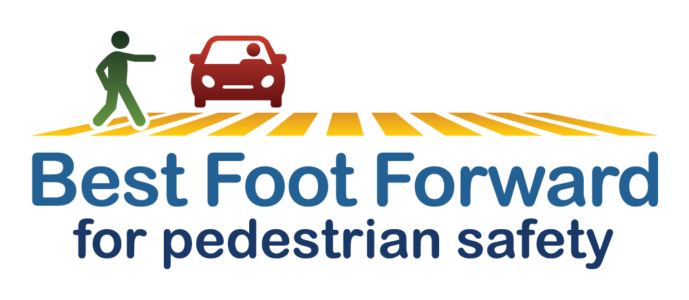From scooters and skateboards to strollers and training wheels, Central Florida’s parks and trails are…

Best Foot Forward Striding into Osceola County
Getting drivers to consistently hit the brakes when people are in crosswalks is the goal of Osceola County and Kissimmee officials who are expanding the Best Foot Forward program into the county this spring.
“We want people out. We want people moving,” Osceola County’s senior transportation planner Mary Moskowitz said during a steering committee meeting back in January.
BFF held a kickoff meeting in @OsceolaCountyFl this morning. Thanks for the warm welcome, @Kissimmee_FL, and thanks to all our new BFFers! pic.twitter.com/oFU54JnTCj
— bestfootcfl (@BestFootCFL) January 24, 2017
If motorists consistently slow and stop for pedestrians, people are more likely to get out and about on foot, Moskowitz said. The simple act of applying the brakes should lead to more walking, making people healthier and, in the process, aid the economy because they will be visiting more shops, restaurants and small businesses.
Osceola County and Kissimmee leaders in traffic enforcement, planning/engineering, public health and education joined together to form the BFF steering committee with a common interest in improving safety for people walking and bicycling in the county.
BFF was founded nearly five years ago in Orange County after a national study determined the road network in Metro Orlando made it the most dangerous place in the country for people walking.
The New York Times even wrote a front-page story about Orlando’s dubious achievement that featured people trying to cross the notorious State Road 436 corridor, a multi-lane road lined with apartments and businesses, but few crosswalks or ways for pedestrians to get from one side to the other without dodging speeding cars and trucks.

BFF has been working with the Orange County Sheriff’s Office, the Orlando Police Department and other agencies to improve pedestrian safety by getting drivers to yield to people in crosswalks and persuading walkers to be more careful crossing the street. The goal is to reduce pedestrian deaths and injuries by 50 percent from 2012 to 2022.
Like the rest of Central Florida, Osceola is a fast-growing area designed around roads that were built after World War II, meaning the sole intent was to move cars fast, typically from town centers or cities to the suburbs.
That concept, however, discourages walking, biking and mass transit because the roads are wide and virtually impossible to cross without a traffic light. That leads to a lot of collisions between vehicle and people.
In Osceola, 204 people were hit by vehicles during 2015-16, including 22 fatalities, according to statistics compiled by MetroPlan Orlando planner Mighk Wilson.
Osceola officials intend to come up with a list of crosswalks where BFF and law enforcement officials can teach drivers — first through warnings, then with $164 tickets — to stop for people walking.
Who knows? With enough education, enforcement of crosswalks and enhanced sidewalks and street lighting, people might feel safe enough to regularly venture out on foot and on bikes to visit Kissimmee’s historic downtown business district and lakefront park.




This Post Has 0 Comments